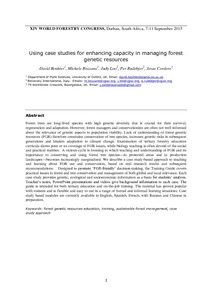The wealth of the dry forests: can sound forest management contribute to the millennium development goals in Sub-Saharan Africa?
Dry forests in Sub-Saharan Africa (SSA) cover approximately 43% of the continent. They are inhabited by nearly 236 million people, many of these the poorest in the world. A majority of the population of these regions is dependent on traditional energy sources (i.e., firewood, charcoal and organic wastes), subsistence farming, generally free-ranging livestock, and products harvested from the dry forests. Growing pressure on dry forest resources to meet human and socioeconomic development needs mean that dry forests are increasingly being utilised unsustainably.



